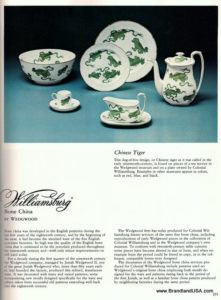 Today, we got a reminder of not only the coming season, but that some companies are dependable. It was a card from JCPenney (NYSE: JCP), saying to come into the store, and pick up a spring and summer catalog at the catalog for free, along with a $5 savings certificate. I’m there!
Today, we got a reminder of not only the coming season, but that some companies are dependable. It was a card from JCPenney (NYSE: JCP), saying to come into the store, and pick up a spring and summer catalog at the catalog for free, along with a $5 savings certificate. I’m there!
We have to admit; we are suckers for these catalogs and in this grim economic season, we need all the cheer we can get. Whenever we are in a JCPenney store, we look over at the catalog desk, as it is quite an interesting relic of American business history, though the catalog operation only began in 1962. JCPenney was a great man, God-fearing and generous, and ran his store on the golden rule. It worked.
When Sears ditched their catalog, it was a major blow to their identity, and they have never recovered. Indeed (do we start too many sentences with indeed? Indeed!) the company ditched the catalog just before the 1990s boom in catalogs, and as such, Sears missed out on a rocking mail order operation that would have translated easily to the Internet.
The JCPenney catalog has survived the other big catalogs, including Sears and Montgomery Ward. Thankfully, Montgomery Ward survives online, and Sears is still a real live company.
In a November press release, the company said that 80 percent of jcp.com visitors have purchased from a JCPenney store, and 33 percent have purchased from a JCPenney catalog. It’s interesting stats; we wonder who would have bought online who hadn’t been in a JCPenney store. INDEED, we wonder. Who in America hasn’t been in a JCPenney store?
Today, with all sorts of enviros blathering on about the evils in making paper, the catalog is a bit archaic. And its a challenge figuring out what goes in the catalog, and what goes online. But it’s a worthy exercise. Because catalogs are good. They sell stuff and we need to sell stuff if we still want to be Americans.
What is the role of the JCPenney catalog in 2009?
- It’s an institution. It’s a link to the past. Having the catalog around shows stability.
- It’s identity. Printing it creates its own reality; it cements ideas in the heads of consumers.
- It’s a direction. It’s a fashion plan for the retailer for the year. The company sets its store direction through the catalog, and the rest of the operation takes cues, or vice versa.
- It’s a promotion. It’s an ad for the web operation.
- Bible: It’s a reference for sales clerks. Having the catalog allows them an easy and fast way to look up core products of JCPenney.
- It’s useful for folks who hate to shop online. It talks to audiences that don’t want to shop online. There are lots of these folks, and they aren’t all over 70.
- They need to shoot the photos anyway. The images in the catalog are used in other print materials, online and in stores. This is expensive, but it needs to be done for Penney to keep fashion leadership in its mid-tier sector. A leading cost of the catalog, actually, is not the printing and paper, though signficant.
- It’s still really cheap, and a great advertisement for the store and the web. It’s like a big flier. Even if it lost money, it is valuable as promotion. JCPenney would have to spend thousands more in print advertising to match it, and it would lose control of their image.
So long live the JCPenney catalog. I love the FundingUniverse.com description of how Penney’s survived the First Great Depression:
The company survived the hard times largely because it had become known for its high quality goods and service, and people turned to JCPenney for the basic items they needed. The company’s profits even increased during the Depression, and by 1936 sales rose to $250 million, and the number of stores grew to 1,496.
There is hope for us, after all.









Garland,
Now that is a great deal! Have you ever seen what old Sears & JCP catalogs go for on eBay? I’ve never understood why either company didn’t do the obvious and digitize those back catalogs in order to monetize on them. They are incredible reference materials for a variety of categories, both from a business perspective and from a cultural perspective.
– Sam